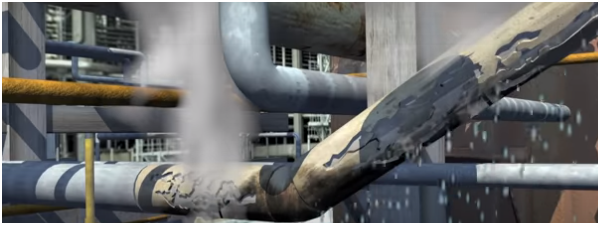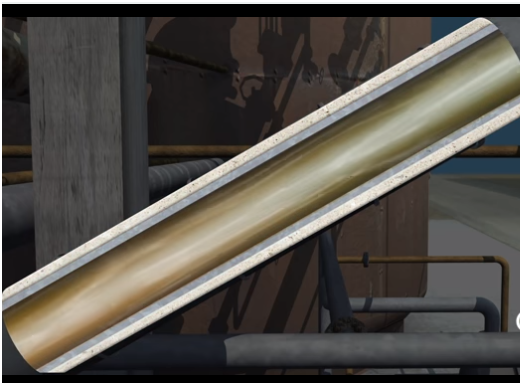Project Analysis Assignment: Principles Of Industrial Maintenance
Question
Task:
Case Study Reflection (10%)
An August 6, 2012, release of flammable vapor led to a fire at the Chevron Refinery in Richmond, California. Please watch the following 8:14 min video (https://www.csb.gov/chevron-refinery-fire/), and prepare a reflection that includes:
- Adequate context information that easily explains this case. - What were the causes of this incident? - How could this incident be prevented? - How would you relate this incident to maintenance?
- What have you learned from this case study? How would you relate your findings to our lectures? - Citations to at least three relevant high quality references (i.e. articles, handbooks, or public reports).
- Sufficient examples/evidence to support your writing (where applicable).
- The following layout report structure: Table of content, Introduction, Reflection and Discussion, Conclusion, Reference, and Appendix (optional)
Answer
Introduction
Maintenance activity is considered as one of the major part in an organization to ensure effective profit of the plant and overall flow of production work. Effective maintenance helps in achieving more production, minimal changes of underutilization of resources and avoidance of time wastage (Yang et al., 2019). The project analyses the fire incident that took place in the Chevron Refinery in Richmond and the way the causes of the incident can be linked with maintenance. Moreover, the report reflects on the things I have learned from the case study and the way it relates to our lecture findings.
Discussion
Background of the Case
Chevron Refinery faced a fire incident in 2012 where the refinery experienced a pipe rupture in its crude unit. The incident took place in the 4-sidecut stream pipe, which is one of the stream that is seen in the exiting refinery. The incident started with a light gas oil that was flowing out of the 8-inch line that was inflammable and started releasing smoke in the atmosphere. Slowly the gas started vaporizing partially in the refinery as a large vapor cloud and the release process fluid ignited into the atmosphere creating the fireball as seen in the picture below. Eighteen of the staffs were able to come out of the site before the ignition, however, one firefighter got stuck inside the fireball.

Figure 1- Vaporizing Gas from the Pipe
Source: Csb (2020)
Causes of the Incident
I think that the fire took place due to technical and safety system deficiencies in the refinery systems. It is seen from the investigation report that the rupture took place in the 4-sidecut piping which was 52 inch and became thin due to the process of depreciation. This process is common and called the sulfidation corrosion. This corrosion is caused in the iron pipes or materials due to continuous thinning. Moreover, it was seen that the pipe from where the vapor eroded was made up of carbon steel, which is an iron made material that erodes or depreciates even faster when met with Sulphur as shown in the figure. Moreover, the refinery used crude oil to pass through those pipes that contain a high amount of Sulphur and needed a metal that is Sulphur resistant (Csb, 2020). In addition to this, the fire took place due to lack carelessness of Chevron refinery who did not listen to the recommendation of internal personnel about the use of the metal that gets eroded by the Sulphur effect. Moreover, they also failed to perform the 100 percent inspections of the components within the of 4-sidecut piping. Such carelessness and lack of consideration and inspection of material and depreciation process has been responsible for the fire incident.

Figure 2- Crude Oil flowing down the Pipe
Source:Csb (2020)
Ways the Incident could been Prevented
The incident could have been prevented with careful consideration of the entire pipeline system in which component usage consideration should have been considered. Consideration of the use of metal in the pipe that affects with Sulphur would have helped in preventing the faster erosion of the pipe. In addition to this, it is seen that the refinery should have conducted inspection of the depreciation taking place in the pipes and conduct improvement process. This would have helped the refinery in preventing the leakage that was caused due to erosion. A careful consideration of the entire pipeline system was the best way to prevent the erosion of the pipes that was the major reason for the leakage.
Relation of Incident to Maintenance
I think the incident of the fireball creation in refinery has close relation with maintenance because it was due to the lack in maintenance of the pipe such as analyzing depreciation and erosion and changing the metal pipes that has eroded or become thin due to Sulphur. The pipes were 52 inch when it was constructed in the refinery and soon after that it failed in august and remained in service only for limited time due to lack of maintenance of the pipe. I think the incident was closely related to preventive maintenance because as I have studied that the process of preventive maintenance is about preserving something in a working order through planned activities and avoiding failures to occur (Yang et al., 2019). In the given situation it is seen that the refinery failed to preserve the original or working state of the order. This shows that the refinery lacked maintenance and that was the reason behind the incident. Further, I have studied that failure occur when there is a change or deviation the quality of the system or product from its satisfactory condition to below the acceptable level. Failure is one of the component of maintenance and such failure was also seen during the incident when the quality of the metal pipe reduced the satisfactory level.
Personal Learning
From the case study I learn that the process of maintenance is an important thing that every plant should consider seeing the risk level of the system. Lack of maintenance and avoidance can lead to the reduction of the quality of the system below satisfactory level and this cause harmful incident such as the fire in the Chevron Refinery. From the week 1 lecture it can be seen that preventive maintenance are planned activities that allow routine maintenance activities in the system and help avoid failures from taking place (Leonardi, Messina & Santoro, 2019). From the findings it can be seen that the refinery did not consider the recommendation of the internal personnel or planned their regular inspection of their pipes and that was the reason that led to the incident to take place.
Conclusion
From the above analysis it can be concluded that maintenance is an important activity in a plant to help prevent such harmful disasters to take place. Maintenance allow the plant to inspect about the level of depreciation in the pipes and the extent to which the pipes need changes over time. The refinery failed to conduct timely maintenance activities and that led to the fireball incident due to pipe leakage. Preventive maintenance is most effective type of maintenance to avoid failures from occurring rather than taking preventive measures after the incident has taken place.
References
Csb. (2020). Chevron Refinery Fire | CSB. Retrieved 9 June 2020, from https://www.csb.gov/chevron-refinery-fire/
Leonardi, F., Messina, F., & Santoro, C. (2019). A risk-based approach to automate preventive maintenance tasks generation by exploiting autonomous robot inspections in wind farms. IEEE Access, 7, 49568-49579.
Yang, L., Ye, Z. S., Lee, C. G., Yang, S. F., & Peng, R. (2019). A two-phase preventive maintenance policy considering imperfect repair and postponed replacement. European Journal of Operational Research, 274(3), 966-977.












